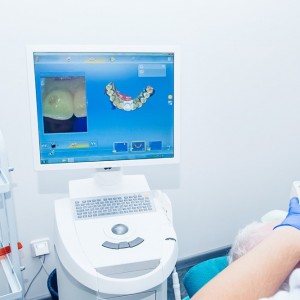
To intervene or not to intervene: decision-making in secondary caries based on bite-wings
Lorenzo Breschi
In everyday practice, caries is considered the most common reason for the replacement or repair of a defective dental restoration, and for the general dentist, the detection of secondary lesions is often a challenge. To detect an interproximal lesion, clinical inspection is not always sufficient, as the presence of adjacent teeth and gingival tissue in cervical areas do not allow an appropriate visual examination of the marginal defects. In such cases, bitewings radiographs are considered the gold standard for an appropriate evaluation of interproximal restored surfaces. However, even if x-rays could be of help, a lack of standardized diagnostic criteria and treatment guidelines for monitoring, restoring or replacing a defective restoration is reported.
An interesting article written by Signori et al. in the late 2018, investigates the different approach of experts in cariology and restorative dentistry compared to general dentistry practitioners when facing a bitewing of a restored proximal surface.
770 posterior bitewing radiographs of teeth with proximal restored surfaces were selected from the database of 7 general dental offices and evaluated by three experts in the field. Experts indicated intervention due to caries in 26.8% of the cases, whereas general dentists established the need for a new restoration in 90.6% of cases. Moreover, general dentists suggested a re-intervention more frequently than experts in case of marginal defects or lack of adaptation of the restorations.
However, as known from the scientific literature, marginal defects around restorations are poor predictors of caries and have limited clinical relevance, since theirs the presence does not predict the longevity of the restoration, and in general is not an indication for a new treatment.
In conclusion, according to the present study, general practitioners and experts show fair agreement regarding the decision-making process in case of interproximal restorations. Non-experts tend to have a less conservative approach regarding the decision to intervene or not on previous treatments.
For additional informations:
Decision-making of general practitioners on interventions at restorations based on bitewing radiographsAuthor links open overlay panel
 Related articles
Related articles
Restorative dentistry 03 November 2025
The worldwide interest of both dentists and patients in esthetic dentistry has affected decision-making in dental practice.
Restorative dentistry 12 September 2025
Traumatic tooth injuries involve function and aesthetics and cause damage that range from minimal enamel loss to complex fractures involving the pulp tissue and even loss of the tooth crown.
The purpose of restorative dentistry is to restore and maintain health and functional comfort of the natural dentition combined with satisfactory aesthetic appearance.
Oral surgery 15 July 2025
The influence of patients' decisions on treatment planning in restorative dentistry
As part of treatment planning, options are presented to patients by dentists. An informal discussion takes place involving a cost-benefit analysis and a treatment plan is agreed.
Restorative dentistry 01 July 2025
Advances in CAD/CAM Technology for Chairside Restorative Dentistry: A Workflow Analysis
Chairside CAD/CAM technology has revolutionized restorative dentistry, offering streamlined workflows and improved patient outcomes.
 Read more
Read more
Much like EMTs rushing to the scene after an accident, stem cells hurry to the site of a skull fracture to start mending the damage. A new finding has uncovered the signaling mechanism that triggers...
Products 05 November 2025
SimplyTest has launched a groundbreaking saliva-based test to detect high-risk strains of oral human papillomavirus (HPV), a major cause of oropharyngeal cancers.
News 05 November 2025
Perimetrics, Inc., a dental technology company pioneering quantitative diagnostics, announced today that the U.S. Food and Drug Administration (FDA) has granted clearance for the InnerView...
News 05 November 2025
On October 15, open enrollment for Medicare began nationwide. Hundreds of thousands of seniors in New Jersey will once again face the challenge of finding the right Medicare coverage, including the...
Digital Dentistry 04 November 2025
Digitalisation is an expanding field in dentistry and implementation of digital teaching methods in dental education is an essential part of modern education.















